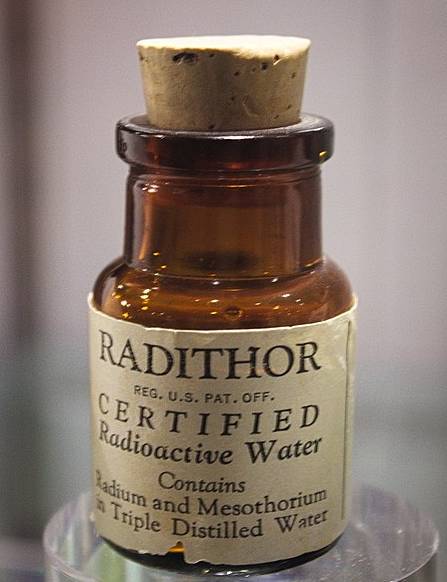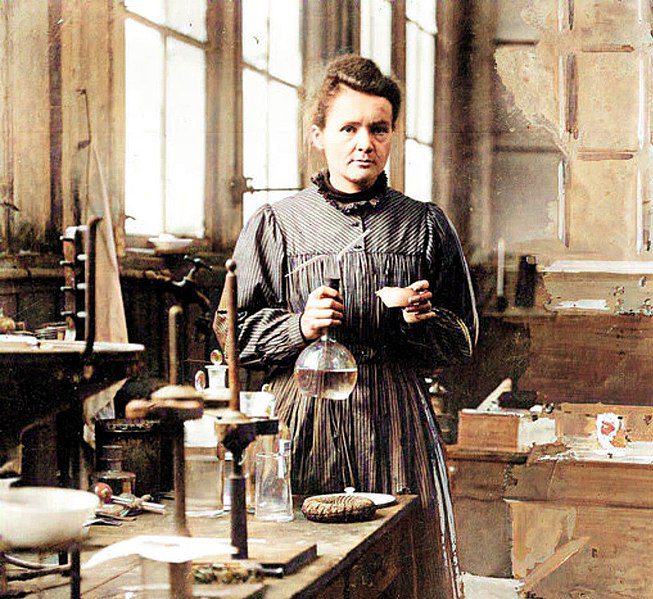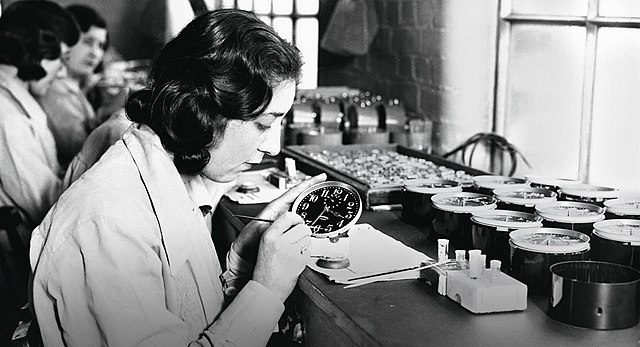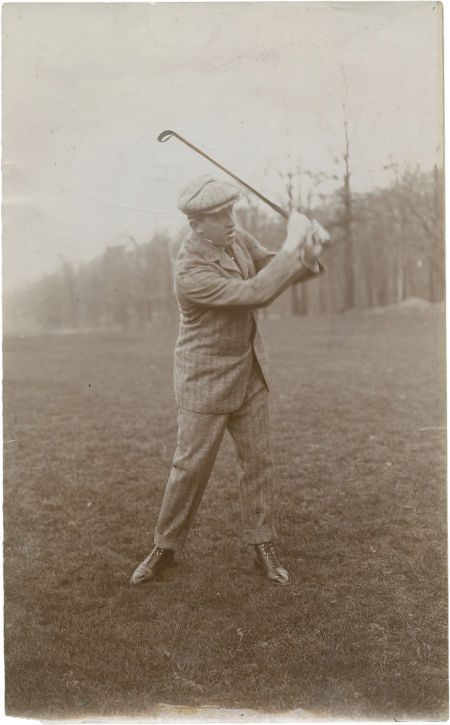In the 1920s, an energy drink called Radithor was promoted by doctors, backed by “scientific” publications, and emblazoned across newspaper and billboard advertisements. If your doctor recommended a simple water-based health tonic to perk you up, would you take it? There was only one problem. It was a deadly poison.

New horizons in science and sales
The discovery of radiation at the end of the 19th century opened up new scientific vistas for the likes of Henri Becquerel and Marie Curie and creative avenues for industrial and commercial exploitation. Radioactive elements were exciting novelties, and it seemed that the public couldn’t get enough of them.
Within a couple of decades, lipstick, chocolate, watch faces, butter, energy drinks, and even condoms with added radioactivity were sold worldwide.

Riding the radiation energy wave
At this point in history, radioactive elements were widely promoted as a “natural” means to energize, heal and stimulate the human body. Everyone wanted to jump on the radioactive energy bandwagon. Luckily the “radioactive” products which the public snapped up generally contained no expensive radioactive element beyond their advertising slogans.
Exaggerated energy drinks

The health drink Radithor was an unfortunate exception to the rule that manufacturers were heavily overstating the radioactivity of their products.
Produced by Bailey Radium Laboratories, Radithor was the real deal – simply radium dissolved in triple distilled water. Dubious non-scientist entrepreneur William J.A. Bailey guaranteed that every 2 oz bottle of Radithor contained at least one microcurie each of Ra 226 and 228 isotopes. Thankfully, no other product on the energy drink market could make the same claim.
Who would market poison as “perpetual sunshine”?
Despite regular trouble with the police between 1906 – 1918 (including jail for mail fraud and a fine for fraud around a supposed impotence cure containing rat poison.) Bailey was back in business by 1922 and making the most of consumer enthusiasm for all things radioactive.
After his Associated Radium Chemists company enjoyed success with radium-laced patent medicine tablets, his American Endocrine Laboratories issued the “Radiendocrinator” radiation device (an extremely doubtful aid for male virility.) Now Bailey turned his attention to health tonics and energy drinks.
Developed in line with the tenuous philosophy of “mild radium therapy,” Bailey Radium Laboratories advertised Radithor as “Perpetual Sunshine” and “A Cure for the Living Dead.” Doctors were incentivized to prescribe with a 17% cut on every recommended dose.
Radium water and Curie’s cure warning
Radithor was riding high in the late 1920s when scientific figures including Marie Curie, the eminent discoverer of radioactive elements curium and polonium, began formally warning against the dangers of radiation.
This wasn’t out of the blue. Researchers had been studying the human body’s radiation uptake since its discovery. As early as 1913, it was known that radium entered bones. A 1914 review of 700 medical reports showed bone necrosis and ulceration as side effects of radium consumption.
In a 1929 address to physicians in New York, Marie Curie stressed that radium was dangerous in untrained hands. She had in mind both patients exposed to unsafe radium therapy and industrial workers without protection.

She was well aware of therapeutic radiation benefits and risks from her work with Claudius Regaud, who developed radiotherapy as a treatment for cancer, and Curie saw a place for radium treatment and handling only in controlled expert settings.
Unfortunately, the snappy advertising slogans of quacks like Bailey shaped public consciousness around radiation, not research papers or statements by eminent scientists. Radithor and its less potent cousins were still hot stuff.
Radium poisoning – what you don’t know definitely can hurt you
Bailey wasn’t alone in irresponsibly exposing US citizens to radiation risks. In certain industries, workers were still allowed or even expected, to handle radium and other isotopes without protection, controls, or monitoring.
The ‘Radium Girls’ are perhaps the best-known group of employees affected by radiation poisoning in this period. The nickname was given to several groups of female factory workers. After painting watch and clock dials with radioactive luminous paint, the Radium Girls were poisoned by ingested radium.

Employers including the United States Radium Corporation and Radium Dial Company deliberately exposed their predominantly young female workforce to toxic substances while assuring the women that the painting process was safe.
The women were provided with no protective clothing, training, or monitoring of radiation uptake. They were actively encouraged to lick their paintbrushes to bring them to a finer point for more precise painting, ingesting radioactivity as they worked. Pointing brushes with a rag was discouraged as it used more time and gave less exact results.

Executives and chemists at the same plants were well aware of the dangers and shielded themselves from exposure.
Glowing with health
Lulled into a false sense of security by their employers’ lies about safety, some of the women reportedly even painted their lips, skin, and teeth with the poison for a fun glow-in-the-dark make-up effect. Soon, of course, the women ingesting radium at these levels began to die. Horribly.
Lost teeth, dental lesions, and ulcers progressed to full “radium jaw” necrosis and other bone-related illnesses. Anaemia, sterility, and pain were rife, and death rates striking. Unfortunately, at least for a time, doctors and dentists complied with employer requests not to release employee patient records. Some medical professionals even bowed to company pressure to falsely attribute employee deaths to other causes, including the sexually transmitted infection, syphilis.
Despite the very obvious profile of radiation illness, from the first death amongst the Radium Girls in 1923 until the conclusions of protracted legal actions in 1928 (New Jersey) and 1938 (Illinois), the employing companies denied responsibility. They continued to smear the reputations of their former employees or delay payouts as long as possible.
While it came too late to help many of those directly involved, these cases were instrumental in building modern US worker compensation and occupational disease labor laws.
Radithor’s ruin
As the Radium Girls’ court cases played out, the consumer market was unaffected, and Radithor sales remained strong. The public perhaps saw only a fringe industrial issue without grasping links to patent medicines or energy drinks. This was about to change.
The tragedy of Eben Byers began in 1927, overlapping with the Radium Girls’ history and part of the same broad picture of recklessness with radioactivity. On his physician’s recommendation, an affluent and well-known American industrialist, sportsman, and socialite, Byers, started taking Radithor after an arm injury.

Perhaps trusting his doctor or possibly taken in by Bailey’s claim that Radithor boosted libido and sexual performance, Eben Byers took the medicine. Recuperating quickly, he developed quite a Radithor habit. He soon consumed the radium-containing energy drinks in quantity, drinking three bottles a day until 1930 when he began to feel unwell.
With symptoms including severe headaches, weight loss, and jaw pain, Byers was eventually diagnosed with radium poisoning. Over the next two years, Byers found himself slowly disintegrating. Losing his teeth and both lower jaw and upper jaw, Byers experienced agonizing pain from his Radithor ailments while holes developed in his skull.
In the 1920s, the Food and Drug Administration (FDA) had no power to take action against a radioactive drink. However, the Federal Trade Commission (FTC) did have the authority to act against false advertising. In the face of rising evidence of harm to consumers, the FTC opened an investigation against Radithor, which Bailey falsely described as “harmless in every respect,” ignoring its long-term health consequences.
A legal team was sent out to Byers’ estate to collect testimony for the FTC investigation in 1931, with Byers now too sick to attend court. Byers’ testimony and horrific physical deterioration helped to ensure that Radithor was taken off the market in December 1931. His social status and the broad media coverage his case received also helped raise public awareness of the dangers of radioactivity.
Eben Byers died in 1932. After his death, Byers’ body reportedly contained over 30 micrograms of radium, described by Popular Science Monthly as the “largest amount of radium ever found in a human being.” When researchers exhumed Byers’ skeleton for further analysis in 1965, a radiation level of 225,000 becquerels in Byers’ skeletal remains indicated a truly whopping radiation dose. Perhaps Byers consumed an even higher dose of Radithor than he admitted in life.
Radithor’s revenge
Until the end of his own life in 1949, William Bailey continued to deny that his highly radioactive radium water caused Byers’ illness and death. He cited his own massive personal Radithor consumption and continued health as proof of the product’s safety. When Bailey’s body was exhumed for investigation 20 years after he died from bladder cancer, medical researchers found extremely high levels of radioactivity in a body described as “ravaged by radiation.”
A final thought
Like the Radium Girls, at least Eben Byers didn’t die in vain. The FTC’s investigation shut down Bailey’s radium business. It led eventually to increased powers for the FDA in protecting public health by ensuring the safety, security, and efficacy of all pharmaceuticals and medical products, including the radioactive ones.

